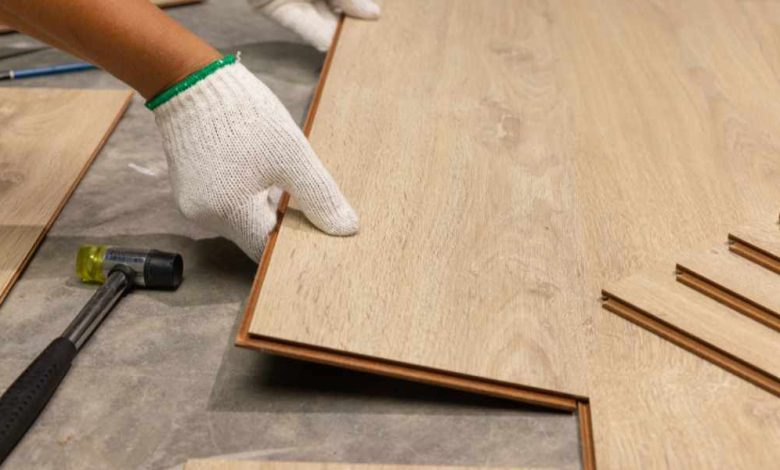A Comprehensive Guide to Vinyl Floor Tiles
A Comprehensive Guide to Vinyl Floor Tiles

In the realm of interior design, flooring plays a pivotal role in setting the tone for a space. Among the myriad options available, vinyl floor tiles have emerged as a versatile and popular choice. This article explores the myriad benefits, design possibilities, and installation considerations associated with vinyl floor tiles.
I. Understanding Vinyl Floor Tiles: A Brief Overview
Vinyl floor tiles are synthetic flooring materials crafted from polyvinyl chloride (PVC). These tiles come in various shapes, sizes, and designs, offering homeowners and designers a wide range of choices to suit diverse aesthetic preferences.
A. Durability and Resilience
One of the key advantages of vinyl floor tiles is their durability. Engineered to withstand heavy foot traffic and resist wear and tear, these tiles are an ideal choice for high-traffic areas in homes or commercial spaces. The resilience of vinyl makes it a long-lasting flooring solution, contributing to its growing popularity.
II. Design Flexibility: Endless Possibilities with Vinyl
A. Aesthetic Versatility
Vinyl floor tiles are available in an extensive array of patterns, colors, and textures, allowing for endless design possibilities. Whether you prefer the timeless look of hardwood, the sleek appearance of marble, or the contemporary feel of concrete, vinyl tiles can replicate these designs with remarkable accuracy.
B. Customization Options
Homeowners can also explore customization options with vinyl floor tiles. Some manufacturers offer the possibility of creating bespoke designs or incorporating unique patterns, enabling individuals to personalize their spaces and make a distinct style statement.
III. Easy Installation: A DIY-Friendly Option
A. Click-and-Lock Mechanism
Unlike traditional flooring options that may require professional installation, vinyl floor tiles often come with a user-friendly click-and-lock mechanism. This feature simplifies the installation process, making it accessible for homeowners who enjoy tackling DIY projects.
B. Minimal Subfloor Preparation
Vinyl floor tiles can be installed over existing floors with minimal subfloor preparation. This characteristic not only saves time but also reduces the overall cost of installation. However, it’s crucial to follow the manufacturer’s guidelines for a successful and long-lasting installation.
IV. Maintenance and Cleanliness: A Practical Choice
A. Stain Resistance
Vinyl floor tiles are known for their resistance to stains, making them an excellent choice for spaces prone to spills and accidents. This quality ensures easy maintenance and allows homeowners to keep their floors looking pristine with minimal effort.
B. Water Resistance
In areas where moisture is a concern, such as kitchens and bathrooms, vinyl floor tiles shine. The water-resistant nature of vinyl makes it a practical choice for spaces where spills and splashes are frequent. Regular cleaning with a mild detergent is usually sufficient to keep vinyl floors in top condition.
V. Affordability: A Budget-Friendly Flooring Option
A. Cost-Effective Solution
Compared to natural materials like hardwood or stone, vinyl floor tiles are a more budget-friendly option. This affordability, coupled with the durability and low maintenance requirements, makes vinyl an attractive choice for homeowners looking to enhance their spaces without breaking the bank.
B. Long-Term Cost Savings
While the initial cost of vinyl floor tiles may be lower than some alternatives, the long-term cost savings are equally significant. With minimal maintenance requirements and an extended lifespan, vinyl proves to be a cost-effective investment that withstands the test of time.
VI. Eco-Friendly Considerations: Sustainable Flooring
A. Recyclability of Vinyl
As sustainability becomes an increasing concern, manufacturers have taken steps to make vinyl floor tiles more eco-friendly. Some vinyl products are now recyclable, allowing for responsible disposal and reducing the environmental impact of flooring materials.
B. Energy-Efficient Manufacturing Processes
Certain manufacturers prioritize energy-efficient production processes, further enhancing the eco-friendly profile of vinyl floor tiles. As consumers seek sustainable options, these initiatives contribute to making vinyl a more environmentally conscious choice.
VII. Conclusion: Elevate Your Space with Vinyl Floor Tiles
In the ever-evolving landscape of interior design, vinyl floor tiles stand out as a reliable, stylish, and practical flooring solution. From their durability and design versatility to easy installation and affordability, vinyl tiles offer a myriad of benefits for homeowners and designers alike. As technology continues to advance, so does the quality and sustainability of vinyl, making it a compelling choice for those looking to transform their spaces with elegance and ease. Consider vinyl floor tiles as you embark on your next flooring project, and experience the seamless fusion of beauty and functionality in your home or commercial space.


